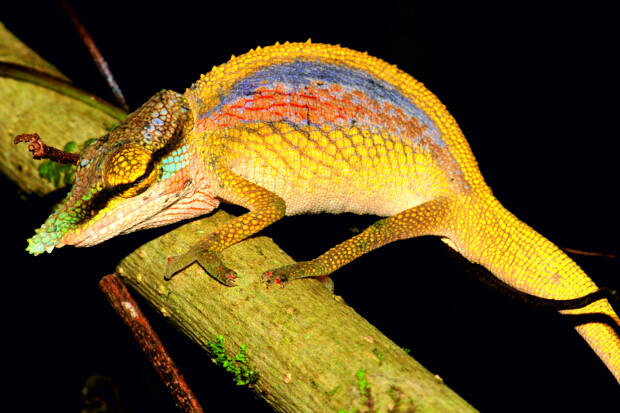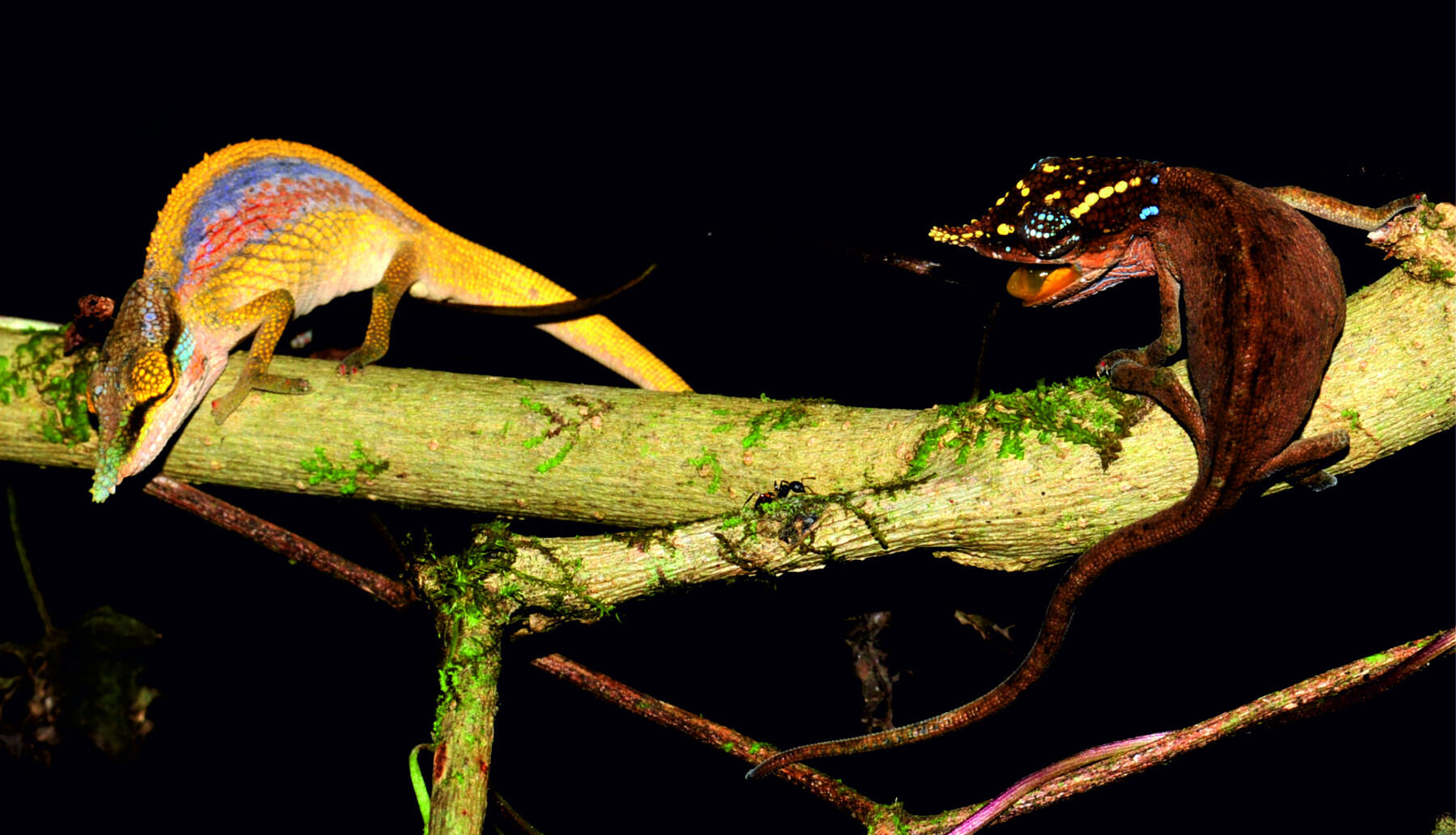
May 16, 2018
Meet Calumma uetzi, a rainbow-colored chameleon from Madagascar that was just named after a VCU professor
Share this story
A newly identified species of chameleon found in the forests of northern Madagascar has been named in honor of the Virginia Commonwealth University professor who created the Reptile Database, a catalog of reptile species and classification that is relied upon by scientists and hobbyists around the world who study reptiles.
The spectacularly rainbow-colored chameleon, Calumma uetzi, has been named after Peter Uetz, Ph.D., an associate professor of systems biology and bioinformatics in the Center for the Study of Biological Complexity in VCU Life Sciences.

“This species is dedicated to our colleague and friend Peter Uetz, who developed and has maintained the Reptile Database voluntarily for [more than] 20 years,” wrote the researchers who discovered the chameleon species. “This database is the most important online resource for information on reptile species, thereby providing a priceless service to herpetology and a model for what should be available for all organism groups.”
The newly identified chameleon was one of three species discovered by a team of researchers from the Zoologische Staatssammlung München (the Bavarian State Collection of Zoology) who published their findings in April in the Zoological Journal of the Linnean Society.
The study, led by David Prötzel, a doctoral student at Ludwig Maximilian University of Munich, describes Calumma uetzi as characterized by spectacular display coloration in males, clearly notched occipital lobes, and females with a dorsal crest.
“The gorgeous display colouration of the new species, which makes it easily distinguishable from all other species, is at its most magnificent when individuals of both sexes encounter one another,” according to an article by Ludwig Maximilian University of Munich. “Then, the male tries to impress the female with a raucous display of yellow, violet, and red. Yet these flashy colours alone are no guarantee of success; an unreceptive female will turn on a male, mouth agape, darkening her own skin to the point of nearly black.”
The principal habitat of Calumma uetzi, the researchers found, is primarily mid-elevation rainforest.
“Most individuals were found at night roosting in the vegetation on thin branches or on the tip of leaves [approximately] 1-3 [meters] above the forest floor and had red mites between the fingers and toes,” according to the study. “When a male and a female were put in close proximity on the same branch, both sexes quickly changed colour and became brightly coloured, and the female threatened the male with an open mouth. In other cases, one of the individuals moved away to avoid closer contact. In one, case the artificial encounter led to a possible mating attempt.”

Uetz said he is flattered to have a chameleon named in his honor, especially one such as Calumma uetzi.
“It's one thing to have a species named after you,” he said, “but it's another thing to have a really nice and pretty species named after you.”
Uetz founded the Reptile Database while working on his thesis project, which focused on proteins involved in vertebrate limb development, as a graduate student at the European Molecular Biology Laboratory in Heidelberg, Germany, in 1995.
Since then, the database has become an indispensable resource for those who study lizards, snakes, turtles, crocodiles and other reptiles. As of March, the database included information on 10,711 species.
Frank Glaw, Ph.D., head of the herpetology section of the Zoologische Staatssammlung München, worked on the study and had the idea to name the species after Uetz.
“Peter Uetz has done a very important job for the herpetological community for more than 20 years, so it was more than appropriate to dedicate this beautiful new chameleon to him,” Glaw said. “We use the Reptile Database very intensively for our research and I am sure that most other herpetologists and many others do the same. The Reptile Database is also very often cited in scientific papers demonstrating its enormous relevance for the herpetological research.”
Subscribe to VCU News
Subscribe to VCU News at newsletter.vcu.edu and receive a selection of stories, videos, photos, news clips and event listings in your inbox.









